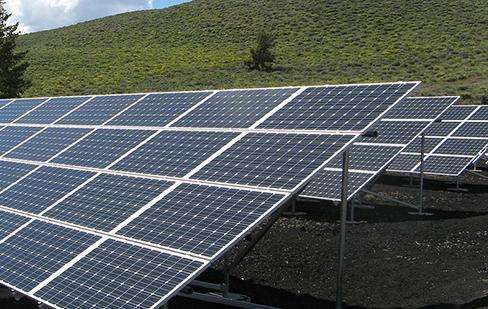url=59/]What is waste heat power generation?
Low-temperature waste heat power generation technology. Pure low-temperature waste heat recovery power generation technology is the result of years of research and experimentation by our company’s shareholders. Different from large and medium-sized thermal power generation, low-temperature waste heat power generation technology recovers medium and low-temperature waste steam and smoke with temperatures below 300~400°C that are continuously emitted into the atmosphere by steel, cement, petrochemical and other enterprises almost every day. It uses low-grade heat contained in gas to generate electricity. It converts low-grade or waste heat energy generated by enterprises in the production process into high-grade energy - electricity. Therefore, it is an efficient and energy-saving technology that turns waste into treasure. The core of this technology is a major breakthrough and progress in high-efficiency heat exchangers and low-temperature non-standard steam turbines. These patented technologies (a total of 7 patents) can successfully directly convert low-grade waste heat into electrical energy, not only the investment cost of building a plant It is low and has significant economic benefits. It has found a way for large enterprises to recover waste heat and save energy and reduce consumption. It is to use thermal energy (the main purpose of this thermal energy is to do other things). In short, it uses the flue gas emitted by high-energy-consuming enterprises and recovers the available waste heat to generate electricity. High energy-consuming enterprises refer to some industries that consume large amounts of energy, such as steel, chemicals, and building materials.
How many measuring points are there for waste heat power generation boilers?
A waste heat boiler that is purely waste heat recovery and utilization mainly includes air volume, air temperature at each point, feed water volume, feed water temperature, feed water pressure, Steam volume, steam temperature, steam pressure, drum pressure, water level, etc. are relatively simple. How big, what form, and what fuel is not a general rule. Lots of temperature and pressure all over our boiler.
Calculation of boiler waste heat power generation
It seems that you understand some problems. Waste heat power generation does not mean using the waste heat of the boiler to generate electricity, but using all available waste heat sources, such as power plants, to generate electricity. Many processes in chemical plants will generate a large amount of waste heat. This part of the heat is collected and used to heat water in the waste heat boiler [url=49/] to generate steam with higher temperature and pressure, thereby driving the steam turbine to do work and generate electricity. Therefore, the temperature requirement for the waste heat source should be about 300C°---400C°. This is not an absolute range. If the temperature is as low as 250C°, low-temperature thermal power generation technology generally has to be used. It is also related to the thermal parameters of the waste heat source, such as flow, temperature, calorific value (if there is combustion), pressure, etc. Boiler efficiency can be calculated by knowing these parameters. If you want to know the machine. 1. It is related to the waste heat temperature, flow rate, and of course the narrow point, end difference and close point temperature difference of the boiler design; 2. The parameters need to ensure superheated steam to prevent water impact on the turbine blades. The poster can consult the relevant boiler factory according to his own waste heat situation, and the relevant boiler factory can make a plan. Under normal circumstances, medium pressure 3.82 superheated steam is required.
I would like to ask how the current blast furnace gas waste heat boiler generates electricity based on the gas volume.
Regarding the capacity and unit parameters of power plants, the power industry standardsThe quasi "Technical Regulations for Design of Thermal Power Plants" has corresponding provisions. The main requirements for waste heat power generation projects are: 1. For blast furnace gas waste heat boiler power generation projects, the determination of boiler capacity is mainly based on the amount of fuel that can be supplied to the power station, that is, based on the amount of fuel that can be supplied to the power station. The amount of gas and the calorific value of the gas determine the capacity of the boiler and generator set; 2. Consider the thermal efficiency of the generator set. Generally, large-capacity units use higher parameters. 3. At the same time, the site conditions, traffic conditions, grid connection conditions, water source conditions, etc. of the power station must also be considered, but the key thing is the fuel conditions. For details, please refer to the "Technical Regulations for Design of Thermal Power Plants" Electric Power Industry Standard, Thermoelectric Heat Source Technology Interaction Group 2459-3444-0. The capacity is determined based on the gas volume, and the pressure level is determined based on demand.














